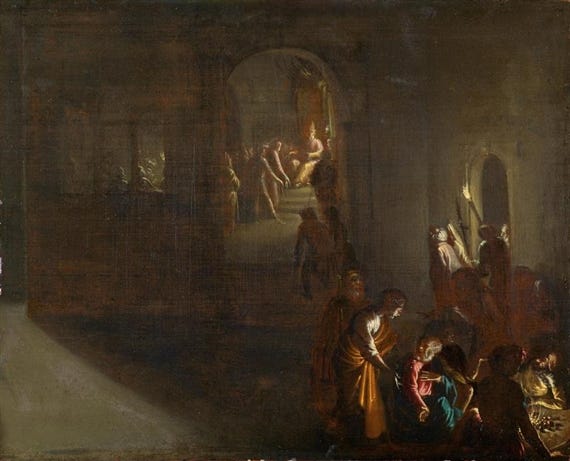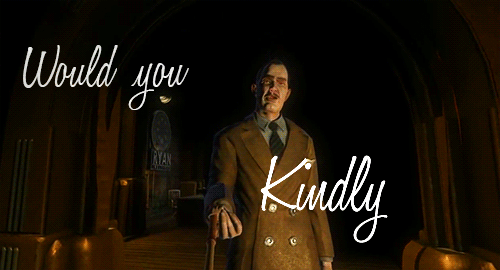Daily Readings | 19 Feb 25 | Keep the Commandments and Test the Spirits; The Betrayal, Trial before the High Priest, and Denial by Peter
Scripture Readings: 1 John 3:21–4:6; Mark 14:43–15:1
I have decided to attempt doing a short reflection on the Byzantine Church’s daily readings when I am able. We will see how long this lasts, but I hope to keep me (and hopefully you) reading and contemplating Scripture.
These daily reflections are more of what am thinking when I read through these texts. I will put in hardly any research—if any at all. These should be read in that spirit: what do I find interesting and wish to discuss in the moment, and what happened to pop in my head.
Feast Day: Holy Disciples Archippus, Philemon, and Apphia; St. Philothea of Athens
Readings: 1 John 3:21–4:6; Mark 14:43–15:1
For today’s readings, I want to focus on Peter’s denial because it is a shocking turn of events for him, at least for his characterization in the Gospel of Mark.
The disciples’ role in the Second Gospel is strikingly minimal; yes, there is a lot about discipleship and what that means. But, when you really contemplate on Mark, their actions in the narrative is mostly to display misunderstanding.
For instance, the Transfiguration (Mark 9:2–13):
|5| And Peter said to Jesus, “Master, it is well that we are here; let us make three booths, one for you and one for Moses and one for Eli′jah.” |6| For he did not know what to say, for they were exceedingly afraid.
The Boy with an Unclean Spirit (Mark 9:14–29)
…and I asked your disciples to cast it out, and they were not able.
The Yeast of the Pharisees and Herod (Mark 8:14–21)
And being aware of it, Jesus said to them, “Why do you discuss the fact that you have no bread? Do you not yet perceive or understand? Are your hearts hardened?”…
…And he said to them, “Do you not yet understand?”
Peter’s Christological Proclamation
After the disciples as a whole bungle the understanding of bread in 8:14–21,—an exegetical and narrative Gordian knot, for which I am currently developing an explanation—there is a healing of a blind man (8:22–26). This is considered a turning point in the Gospel because the healing is meant to be representative of understanding in the narrative.
After the man’s healing, it at first does not work, and he sees “men; but they look like trees, walking” (v. 24). Jesus lays his hands on the man again, and his sight is fully restored. This is a metaphor for understanding in the Gospel as we will read about Peter.

Now, immediately after an instance of misunderstanding about bread in the boat (8:14–21) and then a metaphor about comprehension via a miracle (8:22–26), Jesus and his disciples arrive at Caesarea Philippi. There, Jesus inquires, "“Who do men say that I am?” (v. 27).
The disciples provide some answers: John the Baptist; Elijah; one of the prophets.
Jesus, in turn, asks more pointedly, “But who do you say that I am?” (v. 29a).
To which, Peter announces, “You are the Christ.” (v. 29b).
This exchange and response is not as flowery or developed as in Matthew’s Gospel, but the comment from Peter is still significant. Here, we have for the first time a human declare who Jesus truly is—he is the Christ. Even though there was an instance of misunderstanding just prior, we now read of Peter (partially) understanding who Jesus is.
I say partially, though, because Jesus then details what the significance of this title is in the following pericope: his death (8:31–9:1). And, even though Peter just made a perceptive proclamation, he follows it up with further misunderstanding by rebuking Jesus.
Jesus before the High Priest
Let us now fast forward to part of our Gospel reading for today (14:53–56) where Jesus is interrogated by the High Priest.
Since we have focused on declarative statements concerning Jesus’ identity, I would like to focus on what the High Priest says to Jesus:
Again the high priest asked him, “Are you the Christ, the Son of the Blessed?”
As I said in my last two posts, I wrote on this topic just recently, but I want to add a bit more to it particularly with this focus on identity.
This is a bit of a grammatical and syntactical point which is reliant on Greek, but I will keep it simple. Here, you would only know that this is a question because the narrator told you, “the high priest asked.”
Word order in Greek is not nearly as rigid as it is in English, so questions are not expressed in the same way—commonly there is a question word. What shows this is the parallel statements from both Peter in chapter 8 and the High Priest in chapter 14:
σὺ εἶ ὁ χριστὸς ὁ υἱὸς τοῦ εὐλογητοῦ;
“You are the Christ, the Son of the Blessed?” - High Priest
σὺ εἶ ὁ χριστός
“You are the Christ” - Peter
I have translated both retaining the syntax. As you can see, the word order is exactly the same for both, but one is a question and one is a statement.
Mark makes this same move in 15:2 when Jesus is before Pilate,
σὺ εἶ ὁ βασιλεὺς τῶν Ἰουδαίων;
You are the King of the Jews?
All of these are statements of identity in Mark. Peter’s is genuine, though he misunderstands. Pilate and the High Priest are ironic statements of truth because they do not truly believe Jesus is the Christ or the King of the Jews. That said, in the narrative, they are meant to play a role in the ironic coronation and enthronement of Jesus.
Peter Denies the Christ
In the interim between the High Priest’s ironic statement and Pilate’s, we have a deconstruction of one of the characters: Peter (14:66–72).
Although we witnessed in chapter 8 Peter make this bold and enlightened pronouncement about Jesus, we have the antithesis here. Peter is confronted by others who believe he was associated with Jesus. Rather than claiming proudly Jesus is the Christ, he curses him thrice:
But he began to invoke a curse on himself and to swear, “I do not know this man of whom you speak.”
Another ironic statement of truth. Indeed, Peter knows who Jesus is since he is one of the twelve, and he typically has a role of importance (e.g., his declaration and the Transfiguration). But, in reality, Peter has no clue who Jesus the Christ is.
He has illustrated this routinely throughout the Gospel, especially after his proclamation that Jesus is the Christ. He immediately rebukes Jesus when the explanation of that title is given.
Now, here, right before the fulfillment of all the foreshadowing of the Gospel when the Christ will be mockingly coronated and seated on his throne in death, Peter makes an incredibly real statement: “I do not know this man of whom you speak.”
Just like the High Priest and Pilate, Peter has spoken the truth ironically.
Concluding Remarks
The irony and foreshadowing present in Mark’s Gospel has always fascinated me. Too often, I feel like Christians forgo reading Mark in order to read Matthew, Luke, and John who—on the surface—are more interesting. It is hard to compete with the birth narratives, the Sermon on the Mount, the Farewell Discourses, et al., but Mark has so much to offer. It takes careful reading, but the Second Evangelist created a narrative masterpiece that is fascinating to read.
If you have enjoyed this brief reflection on today’s Byzantine readings and wish to read more about NT studies, would you kindly share this post and subscribe.







